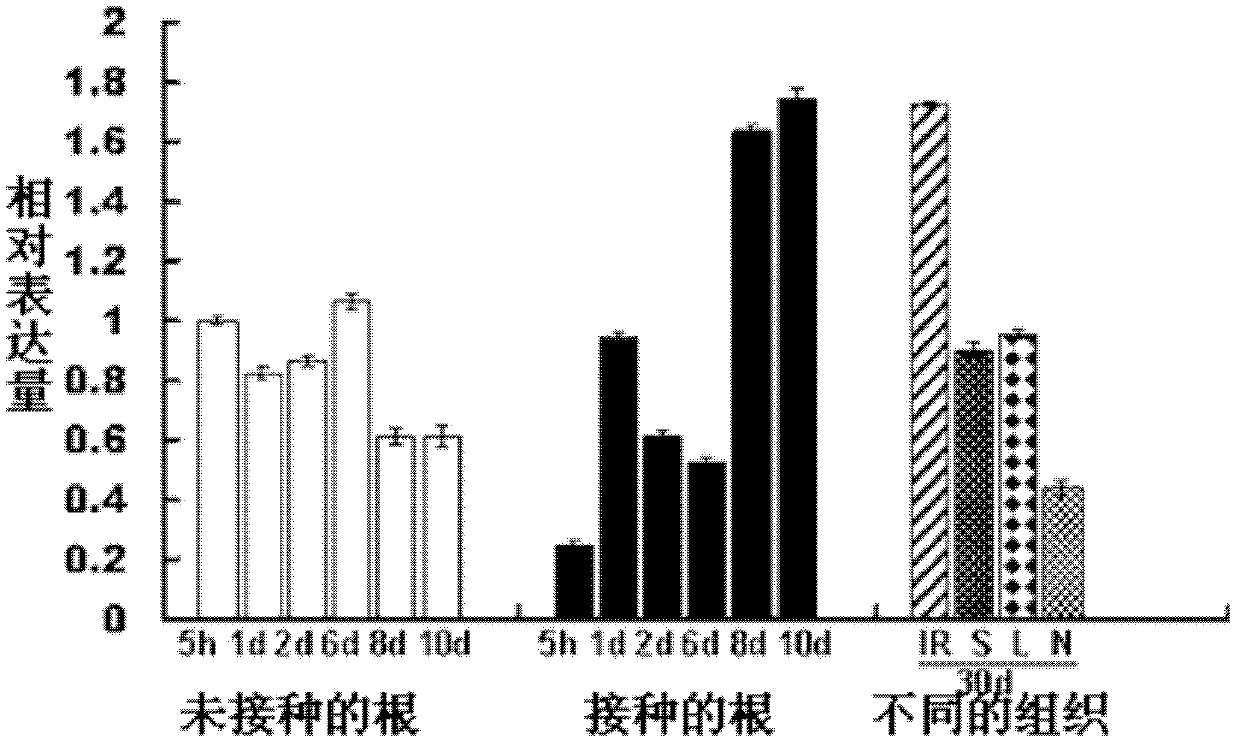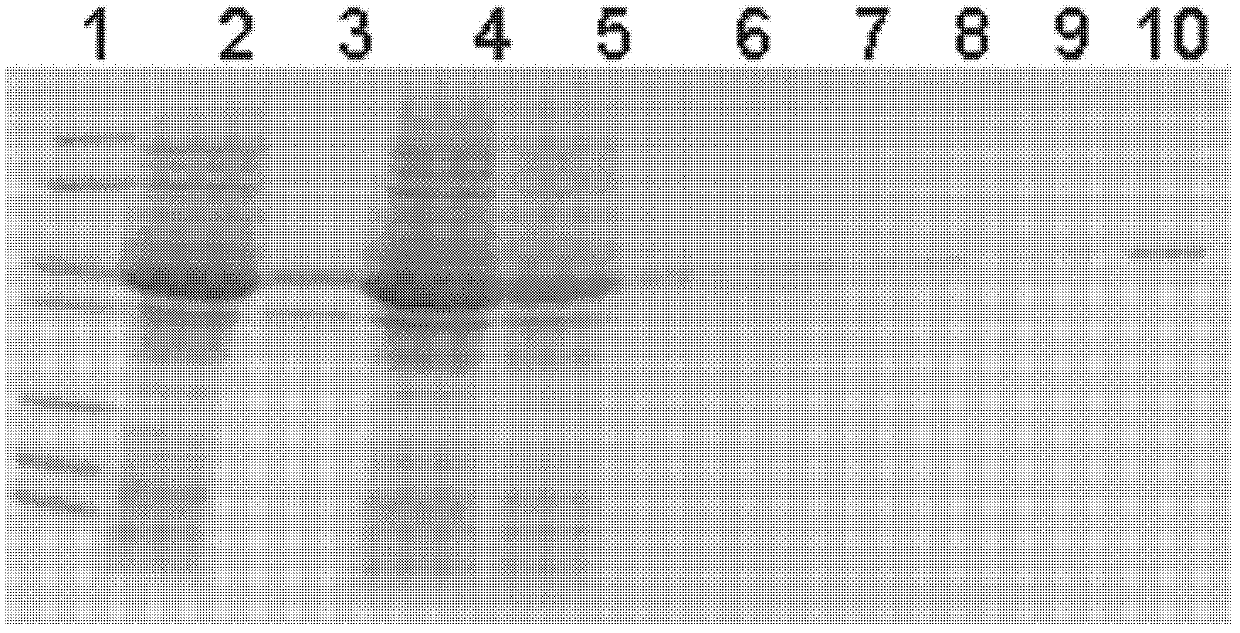Ubiquitin ligase gene participating in symbiotic nodulation of leguminous plants, and application thereof
A technology of ubiquitin ligase and gene, applied in the field of new plants, to increase the number of root nodules, increase fertility, and strengthen the ability of nitrogen fixation
- Summary
- Abstract
- Description
- Claims
- Application Information
AI Technical Summary
Problems solved by technology
Method used
Image
Examples
Embodiment 1
[0045] A method for preparing a ubiquitin ligase gene involved in symbiotic nodulation of leguminous plants, the steps of which are:
[0046] A. Cloning of candidate gene LjSIE3:
[0047] Using the outer part of SymRK-EC of the symbiotic receptor kinase SymRK of japonicus japonicus japonicus and pGBKT7 (a well-known and public yeast protein expression vector) as the bait plasmid, the AD- cDNA library, the colony grown on the plate of SD / -Leu-Trp-Ade-His (auxotrophic yeast culture medium) passed the strict rotation verification, and the plasmid was extracted from the positive transformant and subjected to sequencing analysis to obtain The cDNA containing only 663bp of the C-terminal is the 598-1161 nucleotide sequence shown in SEQ NO:1. The specific implementation steps are:
[0048] (1) Preparation of yeast competent cells by LiAc method, yeast transformation, and library screening
[0049] (1) Streak the frozen yeast Y187 (purchased from clontech company) on the YPDA plate...
Embodiment 2
[0147] A kind of ubiquitin ligase gene that participates in leguminous plant symbiotic nodulation in the application of lotus root, milk vetch, alfalfa, soybean and peanut (legume plant) root nodule number, its steps are:
[0148] A, detection of tissue-specific expression of LjSIE3 in japonicus japonicus:
[0149] Using japonicus subspecies MG20 as material, collect the roots, stems, leaves and tumors of japonicus japonicus inoculated and uninoculated at different times, and extract the total RNA of different tissues at different times (Trizol reagent, purchased from Invitrogen company), Then use fluorescent quantitative PCR technology to detect its expression (such as Figure 5 shown). The specific implementation steps are: reverse transcribe the extracted total RNA into cDNA, use the kit PrimeScriptTM RT reagent Kit (Perfect RealTime) for the synthesis of the first strand of cDNA, reverse transcribe 500ng Total RNA in 20 μl system, use Oligo-dT as the primer, and operate ...
PUM
 Login to View More
Login to View More Abstract
Description
Claims
Application Information
 Login to View More
Login to View More - R&D
- Intellectual Property
- Life Sciences
- Materials
- Tech Scout
- Unparalleled Data Quality
- Higher Quality Content
- 60% Fewer Hallucinations
Browse by: Latest US Patents, China's latest patents, Technical Efficacy Thesaurus, Application Domain, Technology Topic, Popular Technical Reports.
© 2025 PatSnap. All rights reserved.Legal|Privacy policy|Modern Slavery Act Transparency Statement|Sitemap|About US| Contact US: help@patsnap.com



